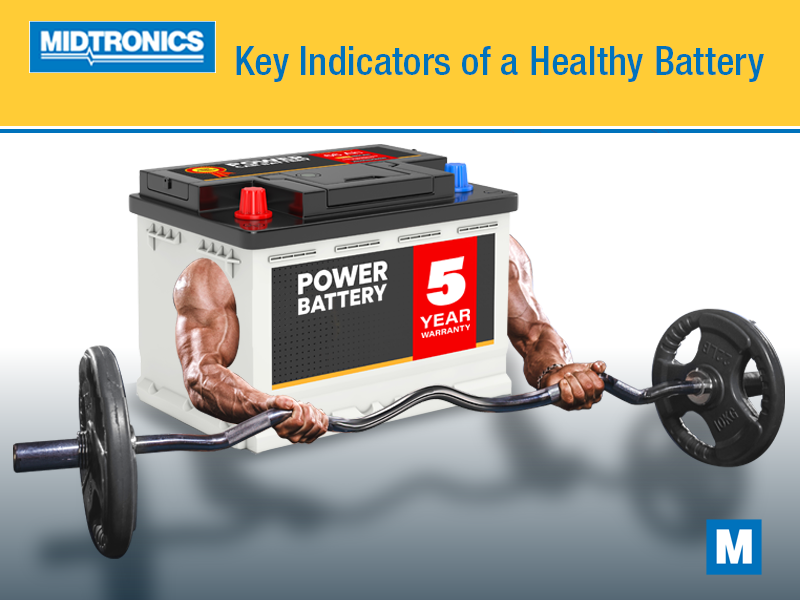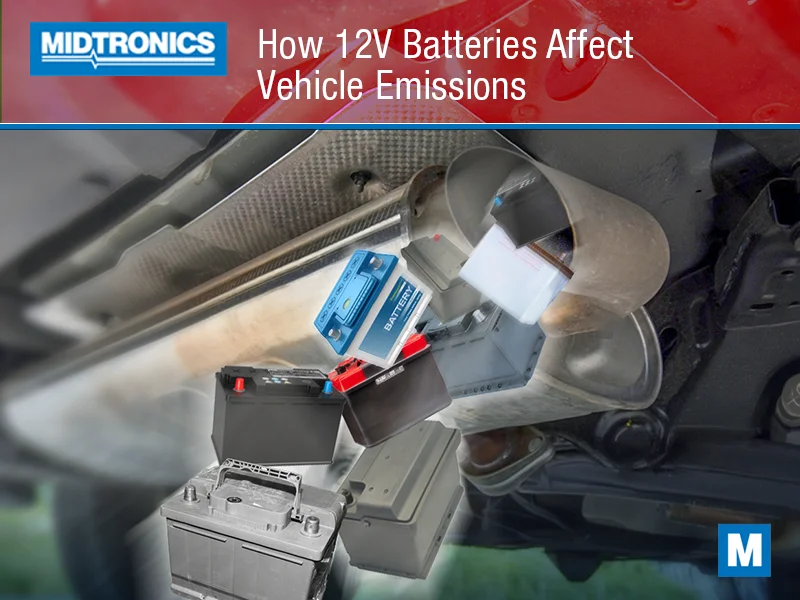Battery tests are part of the daily routine in service bays but too often, the results are treated like a yes-or-no question: pass or fail. In reality, understanding what a healthy battery looks like takes a bit more nuance. And as vehicles get more electrified, whether it’s start-stop systems, hybrids, or full EVs, knowing how to interpret those test results has never been more important.
Here, we break down the key indicators of a healthy battery, with a primary focus on 12V lead-acid systems, while also touching on what to look for in high-voltage EV batteries.
What “Healthy” Actually Means
First, let’s set expectations. No battery is perfect. “Healthy” doesn’t mean brand-new, it means the battery can reliably deliver its required performance under real-world conditions. That includes cold starts, parasitic loads, regenerative charging, and using accessories in modern vehicles.
For 12V systems, we’re mostly evaluating starting power, voltage stability, and internal resistance. For high-voltage batteries, we’re looking at usable capacity, cell balance, and energy throughput. In both cases, the key is not just what the tester says, but why it says it.
For 12V Lead-Acid Batteries: What to Look For
Voltage at Rest
A healthy 12V battery should measure between 12.6V and 12.8V after sitting for several hours without load or charge input. Below 12.4V suggests that it’s partially discharged, which may not be a failure on its own, but it’s a flag. Low resting voltage can indicate parasitic drain, insufficient charge time, or battery aging.
Keep in mind, voltage alone doesn’t tell the whole story. Surface charge can temporarily increase readings, while recent loads may reduce them. Always interpret resting voltage in context.
Measured CCA vs. Rated CCA
Midtronics testers and others estimate a battery’s Cold Cranking Amps (CCA) using conductance, a measure of how well the battery passes current. You’re comparing this measured CCA to the battery’s rated CCA.
A healthy battery should deliver at least 90% of its rated CCA. Anything below 80% is a warning sign, even if the voltage looks good. This metric directly relates to the battery’s ability to perform under load, especially in cold conditions.
Internal Resistance
Internal resistance increases as a battery ages or sulfates. High resistance limits current flow, especially during starting events, where it’s most important. A healthy battery will have low internal resistance, which allows it to deliver strong current without voltage drop.
Since resistance varies with temperature and charge level, it’s best to view it alongside other metrics. But a jump in resistance, even if the battery still passes, can signal early failure.
Consistent Results Across Test Conditions
A healthy battery test will produce consistent readings across multiple tests, even when surface charge is removed or light loads are applied. Fluctuating test results often mean sulfation, stratification, or loose terminal connections. If a battery passes once but can’t pass again under slightly different conditions, it’s worth a deeper look.
For High-Voltage EV Batteries: What to Look For
While we’re gearing toward 12V systems primarily, the rise of EVs means every shop should know the basics of high-voltage battery health indicators, especially for hybrid and plug-in models that also use 12V auxiliary batteries.
State of Health (SOH)
SOH measures usable battery capacity compared to when the pack was new. A healthy EV battery typically reports an SOH of 90 to 100% in early life and should stay above 80% well into its lifecycle. Below 75%, customers may notice range loss or performance issues, even if no warning lights appear.
Cell Voltage Balance
Healthy packs keep voltage differences between cells or modules within tight tolerances, usually within 10 millivolts (mV). Wider ranges suggest imbalance which can be due to cell degradation, internal shorts, or cooling failures.
Consistent Temperature
EVs use thermal management systems to keep the pack within a certain temperature range. A healthy pack will show even thermal distribution during operation and charging. Hot spots or uneven cooling can accelerate wear and indicate system faults.
Clean Diagnostic Scan
Even if capacity and balance look good, an isolation fault or BMS-related DTC excludes the battery from being labeled “healthy.” These errors could indicate moisture is getting in, damaged wiring, or internal safety issues that need immediate attention.
False Positives: When “Pass” Doesn’t Mean Healthy
Sometimes a battery passes the test but still ends up on a tow truck a week later. It could be because:
- Surface charge – A recently charged battery may show artificially high voltage.
- Temperature – Cold can mask internal weakness, or heat can briefly boost performance.
- Load sensitivity – Batteries near failure may pass at rest but falter under real load.
That’s why it’s smart to remove any surface charge before testing, and to repeat the test if results seem borderline or inconsistent. Rely on multiple indicators, not just one reading.
Test History Tells the Full Story
A single test is a snapshot. A pattern of results is a story. Batteries don’t fail instantly in almost any scenario – they degrade over time. Tracking test results across visits helps spot trends early. A battery that drops 10% in CCA between oil changes may not fail today, but it’s on the path. That’s a service opportunity not just to replace a battery, but to build trust by being proactive.
Service managers should make battery testing a non-negotiable part of regular inspections, not just when a customer complains. The data is too valuable to waste.
The Tools Make the Difference
Basic voltmeters or load testers can miss the early warning signs. Conductance-based testers, like those from Midtronics, evaluate the battery’s actual electrical performance under simulated load conditions. And powered by AI, the latest testers like MVT are laser-precise compared to legacy models.
High-voltage battery diagnostics require specialized platforms that can read BMS data, check cell balance, and evaluate isolation resistance. If your shop is working on hybrids or EVs, this is no longer optional – it’s a requirement.
A Healthy Battery is More Than “It Starts”
Battery health isn’t about luck or gut feel. It’s about data, and interpreting that data correctly. A healthy battery delivers consistent voltage, strong cranking amps, low resistance, and predictable performance. For EVs, that also means balanced cells, solid SOH, and clean diagnostics.
When your team knows what good looks like, you prevent comebacks, improve customer confidence, and elevate your shop’s reputation. Midtronics tools are designed to give you that confidence test after test, battery after battery. Because when it comes to battery health, “good enough” just isn’t good enough anymore.




